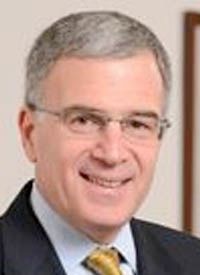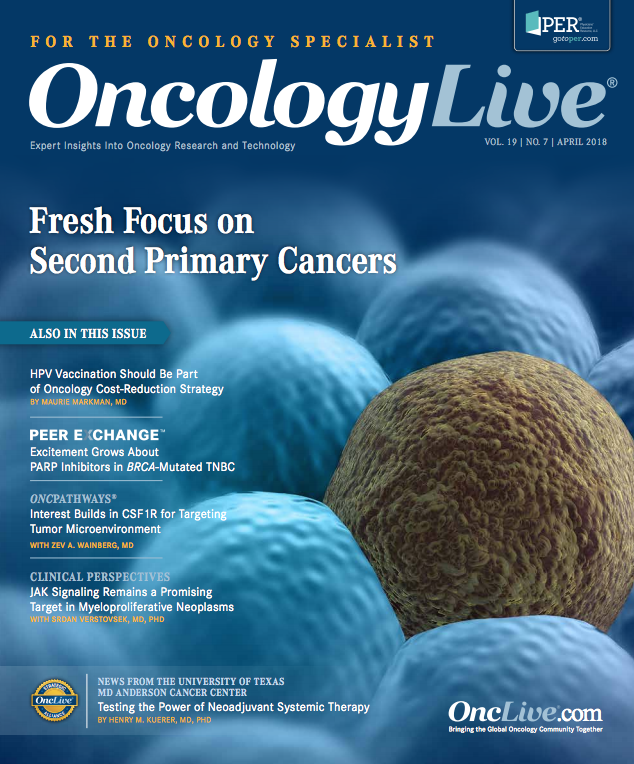Publication
Article
Oncology Live®
Coping With the Shortage of Oncologists
Author(s):
The shortage of doctors and other professionals to fill available positions in oncology practice is not news to practitioners—the American Society of Clinical Oncology has long chronicled the growing need for young oncologists to fill the ranks as senior ones retire or leave due to burnout.
Mark S. Soberman, MD, MBA

Mark S. Soberman, MD, MBA
The shortage of doctors and other professionals to fill available positions in oncology practice is not news to practitioners—the American Society of Clinical Oncology has long chronicled the growing need for young oncologists to fill the ranks as senior ones retire or leave due to burnout. The rising population and growing access to care also contribute to this trend. But the dimensions of this workforce deficit became starkly clear with the release of 2017 survey data from the Association of Community Cancer Centers (ACCC).
The association polled 293 program administrators and providers from 209 cancer treatment institutions around the country—mainly hospitals and academic medical centers (89%)—and found that nearly half (47%) reported vacancies for medical oncologists. This is no idle statistic but a sign that oncology centers are struggling to find physicians, said Mark S. Soberman, MD, MBA, past president of the ACCC, in an interview with OncologyLive® about the group’s 2017 Trending Now in Cancer Care Survey (FIGURE).1
Figure. Staffing Trends, Oncology Practices1
The findings underscore the need to train more oncologists, radiologists, and surgeons to fill available openings, but they also indicate a need to delegate more routine work to advanced practice providers (APPs) and other healthcare professionals, he said. “We have to be creative. We have to think outside the box in terms of what the current care model is if we’re going to meet the needs of the future, because the old way of doing things may not suffice.”
Soberman’s own cancer treatment program at Monocacy Health Partners at Frederick Regional Health System of Maryland has encountered this problem. “We have an incredible program and we have great compensation, and we’re finding folks,” he said, “but it’s taking us a long time, and it’s a lot of work to find physicians and advanced practitioners.”
Giving APPs Freedom to Act
Insights into staffing considerations were among the key findings in the survey. Other areas of interest include trends in the use of molecular tumor boards, the challenges of trying to improve care in the face of financial pressures, and intergrating new technology into practice.Bringing APPs on board is 1 solution to the problem of not enough oncologists, but it entails cultural and procedural adaptation to ensure that APPs are satisfied with their roles and allowed to work at the top of their abilities, because they too are in demand and can switch jobs almost at will, according to Jason Astrin, PA-C, MBA, DFAAPA, director of Advanced Practice Provider Services for The US Oncology Network (see related story on page 56). One in 3 ACCC survey respondents reported open positions for APPs. In addition, 66% reported open full-time equivalent (FTE) positions for oncology nurses, and 1 in 4 reported FTE nurse navigator and registrar vacancies.
Another potential solution to the shortage of top-level medical expertise is for oncology practices to work more closely with primary care physicians, giving them a supporting role in cancer care, Soberman said. This could simply entail greater involvement in survivorship and follow-up care, or more responsibility than that. Survey respondents described APPs mainly as nurse practitioners (81%), physician assistants (41%), and clinical nurse specialists (21%); 12% said they do not use APPs. Among those who do, the top 3 tasks assigned to these healthcare workers are symptom management, follow-up patient visits in the outpatient clinic, and survivorship visits.
Nurses are heavily engaged in managing patients on oral therapies (63%), with physicians (49%) and APPs (43%) sharing that task. Pharmacists are doing a portion of this type of work, too, according to 41% of respondents.
Although oncologists may have large caseloads, in the infusion centers, nursing staff carry highly variable loads. Nurses might each be assigned 7 to 9 patients per day (46%), 10 to 12 patients (30%), or 4 to 6 patients (24%). At any given time, nurse navigators may have as few as 0 to 25 patients (13%) under their management or as many as 200 or more (8%).
Molecular Tumor Boards
Amid the rising workload, practices are achieving new operational efficiencies with telehealth technology, the survey found. One in 3 respondents said their programs plan on using this for genetic counseling and survivorship visits in the next 2 years; 1 in 4 said they plan to use telehealth for symptom management, symptom monitoring, and oral chemotherapy adherence and support in the next 2 years; and 1 in 5 said they would use it for nutrition counseling, psychosocial counseling, medication management, and second opinions in the next 2 years.Another key issue identified by the survey is the need within practices for greater collective expertise in diagnosis and treatment. The survey highlighted the fact that many cancer treatment institutions still do not have molecular tumor boards. Although the agent armamentarium has grown increasingly complex and more homework is required of providers to understand these drugs, just 27% of survey respondents said their oncologists participate in a molecular tumor board. This is bound to change because of the growing importance and value of tumor sequencing, according to Soberman. “Are your pathologists up to speed on all of the mutational data? Does your organization have access to a geneticist? That’s part of the challenge,” he said.
This issue should concern community cancer clinics, as well as the larger institutions, and Soberman predicted that virtual tumor boards may become the solution for smaller treatment centers that, unlike institutions with greater resources, cannot afford to embed the molecular agent expertise within their staffing structure. Ultimately, appropriate targeting of agents will require a higher degree of informed use, and this can be accomplished only with more information and the ability to synthesize that data so that it can be put to practical use, he said.
“It’s getting more complicated, and I think that we’re going to need a lot more data analytics. We’re going to need to have the type of sharing and transparency out in the real world that former Vice President Joe Biden’s Moonshot was looking for—really unleashing the power of big data,” Soberman said.
Technology Improves Adherence
The survey results suggested that cancer treatment centers do want to give their patients cutting-edge therapies, but when it comes to testing for genetic mutations, the main concern is not about expertise. The biggest barrier to molecular testing cited: concerns about insurance coverage (82%).Practices are under increasing pressure from the Centers for Medicare & Medicaid Services (CMS): Cuts to fee-for-service payment were cited by 46% of respondents as a chief barrier to future cancer program growth. However, through payment models that provide financial rewards for improvements in quality of care, CMS has opened the door for practices to improve their revenues by innovating and achieving better health outcomes.
Improving patient adherence to medication is a widely recognized means of accomplishing this, and Soberman described what he called an exciting new technology that can tell a doctor whether a patient is taking the prescribed medication—the Proteus Digital Health system, which emits a radio signal sparked by a chemical reaction within the patient’s stomach. Recently approved for other indications, this technology is not yet available for oral chemotherapy but, if adaptable for oncology, could be 1 solution to the adherence problem, Soberman said.
“Some of the most highly touted drugs are still intravenous, and these include immunotherapies, such as chimeric antigen receptor T cells. Oral chemotherapy certainly is increasing in importance, but 1 of the things that make it interesting and challenging is, how do we manage it and make sure of adherence?” Soberman said. Of the survey respondents, 34% said the percentage of patients receiving oral chemotherapy has significantly increased, whereas 49% said there has been a slight increase.
Most (96%) said they are prescribing immunotherapeutic agents but are not universally comfortable with managing immune-related adverse effects—33% said they were “very comfortable” versus 32% who reported being “very uncomfortable” with this task.
Amid growing emphasis from CMS on management for lower costs and better outcomes, 34% of survey respondents said they are either developing or planning to add symptom management clinics in the next year. A slightly smaller proportion are working on phone triage programs (32%), and others are developing high-risk clinics (31%) and survivorship clinics (34%).
Striving for Interoperable EHRs
Among private payers, preauthorization requirements continue to increase. Half ( 51%) of respondents said this rise has been significant, while 31% said it has been slight.The lack of interoperability of electronic health records (EHRs) remains a barrier to smooth functioning and adds to physicians’ workload, the survey found. EHR systems are still very limited in the type of data that can be transmitted to providers outside cancer programs. Among respondents, 18% said they could send provider notes; 18%, medication lists; 16%, lab results; 16%, pathology results; 16% imaging results; 7%, survivorship care plans; and 7%, none of the aforementioned.
Many oncology practices struggle with the management of multiple systems (1 in 4 uses 4 or more EHR platforms), and these do not always facilitate the communication of data to outside practices. In the survey, 51% of respondents reported that their EHR systems have interoperability capabilities, but 31% said they do not.
Part of the problem, Soberman said, can be traced to the federal government’s American Recovery and Reinvestment Act of 2009, which specified “meaningful use” of certified EHR technology. The well-intentioned act helped push physicians away from dependence on bulky paperbased filing systems, but its key failure was not ensuring that EHRs are designed to share information. “It’s remarkable to me that even though all EHRs are based on the same programming language, a lot of EHRs can’t talk to one another,” Soberman said.
Many survey respondents (80%) agreed that EHR systems have increased physician and staff workloads. Half reported a slight decrease in patient time with providers because of EHRs, and 16% found that clinician time with patients “significantly” decreased following EHR adoption.
Institutions and Alliances
The importance of EHR interoperability is expected to rise with the changing patterns of behavior among patients. Many of them change providers more frequently, increasing the importance of communication among providers to ensure continuity of care. One aspect of this is the ability to transmit survivorship plans, particularly as the number of cancer survivors grows.The trend toward consolidation and professional affiliation continues: Of those institutions surveyed that pursued professional partnerships, 75% affiliated with an existing hospital or health system, and 36% forged ties with a private oncology practice. Those joining national oncology groups formed just 4% of the total. Half (50%) said a desire to maintain or grow market share was behind these affiliations, whereas 25% said they sought to increase alignment with hospitals and physicians.
Among difficulties in growing practices, the cost of drugs and new treatment modalities was indicated by 68% of respondents; physician alignment around services and program goals, 47%; changes in healthcare coverage, 46%; cuts to fee-for-service reimbursement, 44%; and shifting reimbursement from fee for service to value-based care, 43%. Marketplace competition was cited by 35%, and 19% of respondents said that marketplace competition had significantly increased.
Highlights from the 2017 Trending Now in Cancer Care Survey. Association of Community Cancer Centers website. accc-cancer.org/ docs/documents/surveys/trends-in-cancer-programs-2017.pdf?sfvrsn=6587a030_0. Accessed January 25, 2018.









